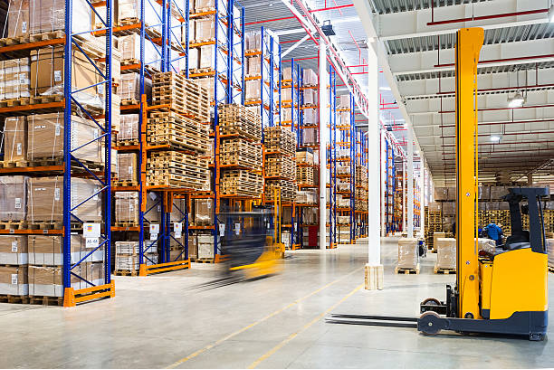Boost Efficiency and Cut Costs with Smart Warehouse Racking
When businesses focus on cost-cutting and operational improvements, optimizing warehouse storage is often an overlooked but powerful strategy. A well-planned warehouse racking system not only maximizes space but also boosts efficiency and safety.
When businesses focus on cost-cutting and operational improvements, optimizing warehouse storage is often an overlooked but powerful strategy. A well-planned warehouse racking system not only maximizes space but also boosts efficiency and safety.

What is Warehouse Racking?
Warehouse racking is a structured storage system designed to hold pallets or products efficiently, creating an organized and accessible environment. It consists of vertical frames and horizontal beams that support shelves at multiple levels, allowing warehouses to store goods systematically while improving workflow.
Types of Warehouse Racking Systems
Different businesses require tailored storage solutions. Here are the most common warehouse racking systems:
- Selective Racking – A widely used system that provides direct access to each pallet.
- Drive-In/Drive-Through Racking – Enables forklifts to move within the racking structure for high-density storage.
- Push Back Racking – Uses inclined rails to allow pallets to slide backward, optimizing space.
- Pallet Flow Racking – Gravity-fed rollers facilitate smooth pallet movement, ideal for fast-moving inventory.
- Cantilever Racking – Designed for long or bulky items like timber and pipes, offering an open-front structure.
- Double-Deep Racking – Stores two pallets back-to-back, increasing storage density within the same footprint.
How Warehouse Racking Improves Efficiency
A strategic warehouse racking system enhances overall operations by:
- Maximizing Space: Utilizing vertical storage reduces the warehouse footprint while increasing capacity.
- Enhancing Organization: Well-arranged inventory allows faster order picking and fewer retrieval errors.
- Boosting Productivity: Employees spend less time searching for items, improving workflow efficiency.
- Protecting Inventory: Secure racking reduces product damage, preventing financial losses.
Key Benefits of Warehouse Racking
- Customizable: Can be adapted to fit various warehouse layouts and business requirements.
- Flexible: Adjustable configurations support changing inventory needs.
- Space-Saving: Optimizes both vertical and horizontal storage.
- Safe & Stable: Reduces accidents by ensuring structured storage.
- Improved Accessibility: Allows quick access to goods, reducing delays.
Warehouse Racking Safety: Best Practices
Safety is crucial in any warehouse. Follow these key safety measures:
- Regular Inspections: Check for damage, rust, or misalignment in racking systems.
- Weight Compliance: Always adhere to weight limits to prevent collapses.
- Employee Training: Educate staff on proper loading, unloading, and safety protocols.
- Clear Aisles: Keep pathways unobstructed to avoid accidents and improve accessibility.
- Routine Maintenance: Prevent costly failures through scheduled maintenance and repairs.
Find the Right Warehouse Racking System for Your Business
Investing in the right warehouse racking system is essential for maximizing storage, improving efficiency, and maintaining safety. Whether managing inventory in a compact warehouse or a large industrial facility, understanding your specific storage needs will lead to long-term cost savings and operational success. Assess your options, consult with industry experts, and implement a racking system that aligns with your business goals.